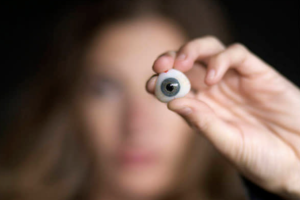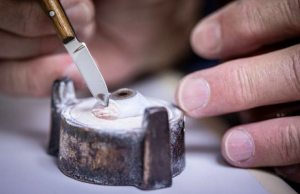An ocularist’s main duties are to create a prosthetic by moulding, colour matching and supplying the prosthetic to enable the patient some form of symmetry to the facial area. The aim of an ocularist is to replace the affected area cosmetically with the best symmetry possible. Ocularist try to create comfort for the patient, with as much movement as they possibly can of the prosthesis.

Eye plays a very important role in facial expressions. Ocular prosthesis rehabilitation can produce a significant impact for an individual’s physical, physiological, social and psychosomatic health for those who have a missing eyeball or loss of any tissue or organ. The reason for losing an eye can be due to the result of congenital defect, disorder, accidental trauma, serious ocular diseases, or surgical intervention. Surgical procedures for the removal of the eye can be classified as evisceration and enucleation. After the surgical procedure, the following treatment includes implant retained or a custom made acrylic ocular prosthesis.
A prosthetic eye can help to improve the appearance of the individual who has lost an eye. Wearing an eye patch or bandage is also one of the choices for individuals yet if the entire eye is removed, ocular implant and prosthesis prevent the eye socket’s tissues from growing into the empty space. A custom made ocular prosthesis is preferred as it provides close adaptation to the tissue surfaces and provides maximum comfort.
Prosthetic eye is commonly called or known as “glass eye” or “fake eye”. It acts as a shell that covers the structures of the eye socket. It does not restore vision so the vision will still have no perception of light (NLP).
What Is a Prosthetic Eye Made of?

“What is a prosthetic eye made of?” is a frequently asked question. A prosthetic eye can be made up of a few materials that can adapt with the eye socket tissue closely, such as hard, plastic acrylic. The common material used is acrylic plastic polymer which is also known as polymethyl methacrylate (PMMA). PMMA is lightweight, shatter-resistant and is an alternative to glass where glass was used at the beginning of this technology. Silicone polymers also used to make artificial eyes.
How is an ocular prosthesis created?

Prosthetic eye can be created when the eye socket is ready and stable after the surgery, approximately 3-6 weeks after the surgery. Prosthetic eye must be created by an ocularist who specialises in custom-crafting artificial eyes. There is a layer of the eye known as sclera, which is seen as the white of the eye. During the evisceration surgery, the damaged eye’s internal organs are removed while leaving the sclera intact. Inside the sclera is then placed an implant where it adds volume to the bony socket. Once the implant is put in place, the other layer of the eye is stitched. The eyelid needs to be closed together then a stitch is put in place for a week for 10 days. After 3-6 weeks of the surgery, the process of placing an artificial eye begins. The ocularist will measure the amount of space in between the eyelids and create a prosthetic shell. This is then hand painted such as it matches the colour of the normal eyes.
Adjustments and refitting of the prosthetic eye is needed as time goes on due to the fact that the eye socket can change in shape over time. Prosthetic eyes require yearly polishing by an ocularist and replacement every 5 to 7 years.
